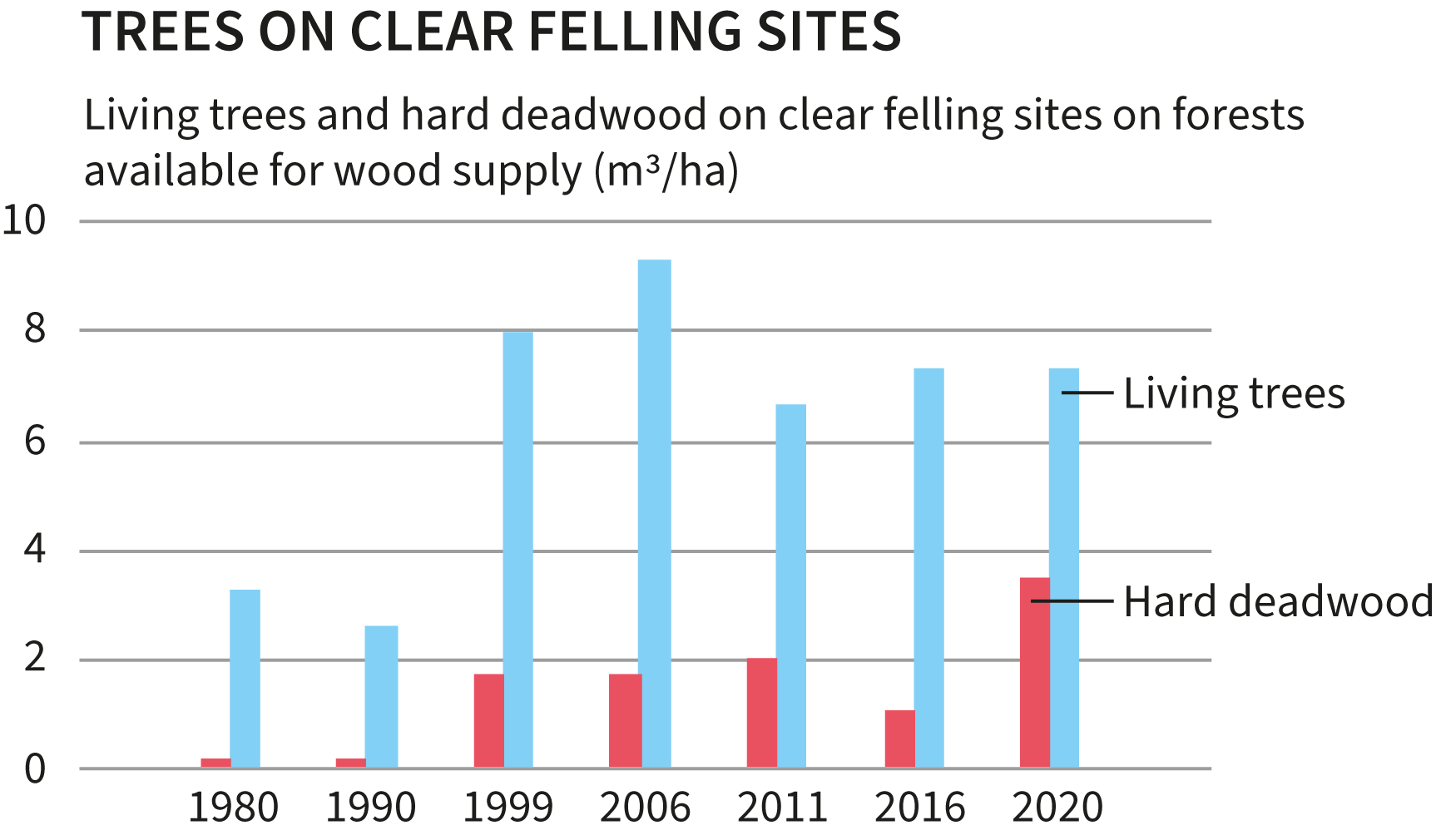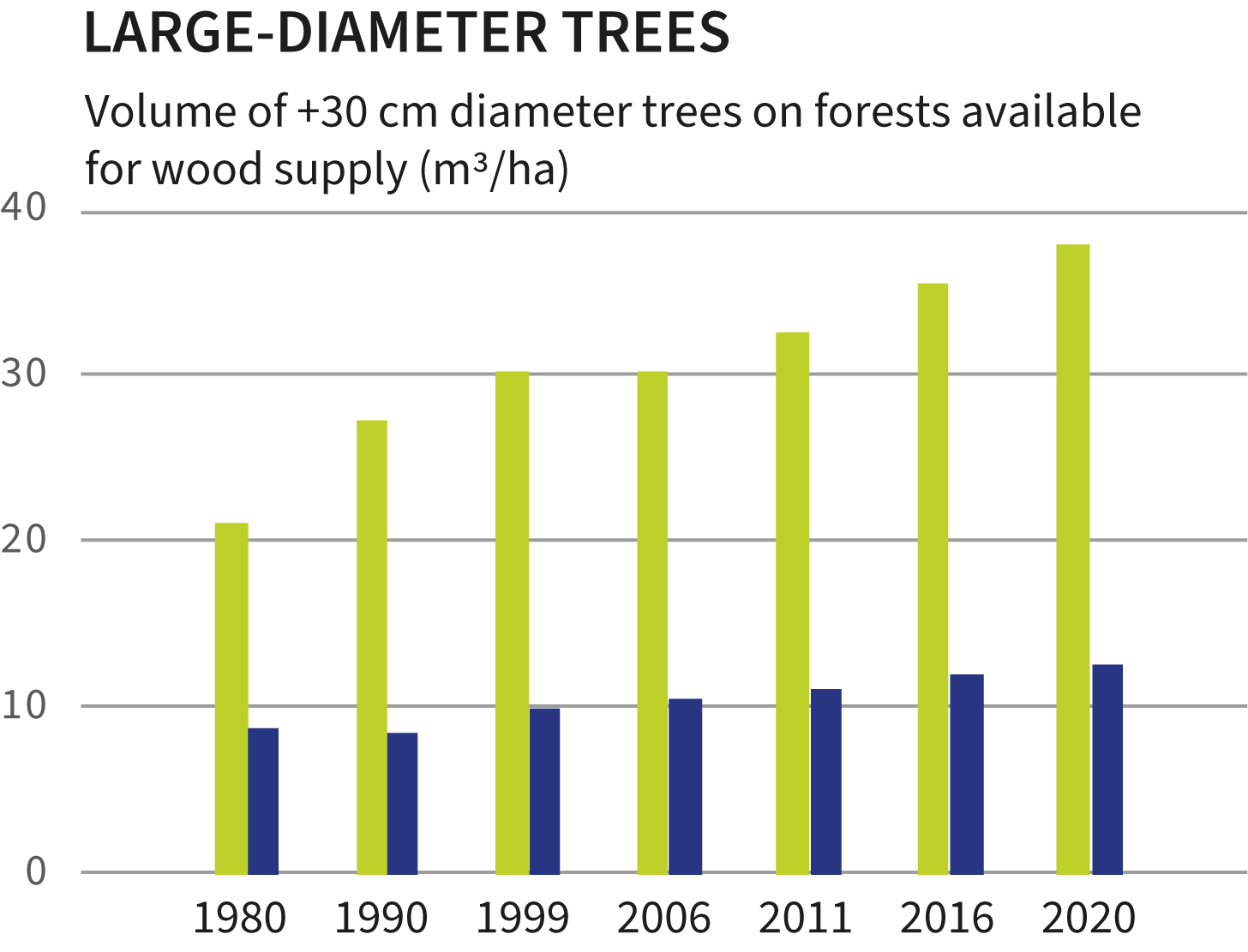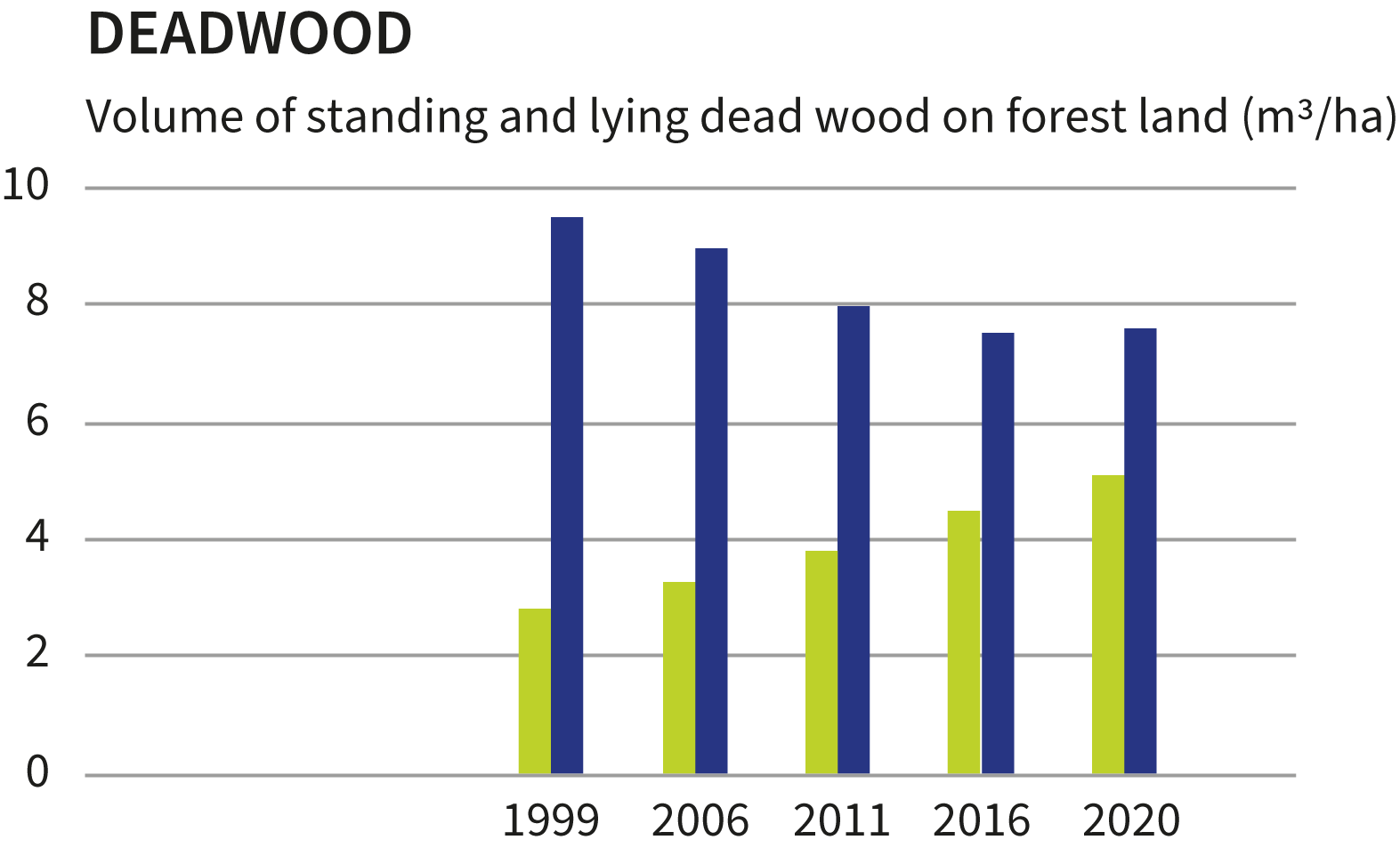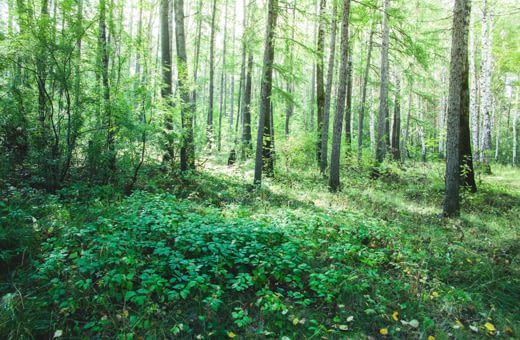Measures to strengthen the state of nature in connection with forest management have been carried out for about 30 years. At the same time, the area of protected forest has multiplied. The effects of these measures and restrictions are often not visible until after a long time. Therefore, structural and speciesrelated changes are only partially visible in our forest nature today.
The desire of the wood processing industry to invest in Finland has long encouraged forest owners to take care of the vitality of forests and increase forest resources. The volume of growing stock on forest land (forests available for wood supply and protected forests) has increased by 50 per cent over the past 40 years. The positive trend is visible in various tree species. The volume of broad-leaved trees has almost doubled in southern Finland.

Aspen, which is important for biodiversity, has doubled its volume. The volume of birch and several rare broad-leaved tree species has also increased. The risk for future forests is that the young forests in southern Finland have become dominated by spruce.
The extensive introduction of forest certification in Finland has made retention trees part of forest management. Mainly for this reason, the volume of living trees spared on clear felling sites has almost tripled in our managed forests over the past 30 years.

The total volume of large-diameter trees has increased, almost doubling in southern Finland, since the 1980s.

The volume of standing and lying dead wood has increased in southern Finland.

Nowadays removal of dead wood is avoided in felling, and retention trees are left on felling sites, leading to increased amount of dead wood in forest in the long term. The amount of dead wood in northern Finland has decreased in both forests available for wood supply and protected forests as there has been no large-scale storm damages for decades in the north. However, the latest inventories show that the downward trend has come to a halt.
In addition to actions for biodiversity, various forest management methods affect the state and development of forest species. The changes in soil scarification with methods that disturb the soil less has improved the growth and spread of subshrub plants. The coverage of bilberries, lingonberries and crowberries have taken a positive turn from the 1990s to the present day. The coverage of glittering woodmoss and red-stemmed feathermoss has also increased.
At the same time, the decline of wetland species has continued as the bogs drained in the last century have dried up resulting in a vegetation similar to that on mineral soils. For example, several sphagnum moss species as well as bog bilberry and cloudberry have decreased in coverage.






